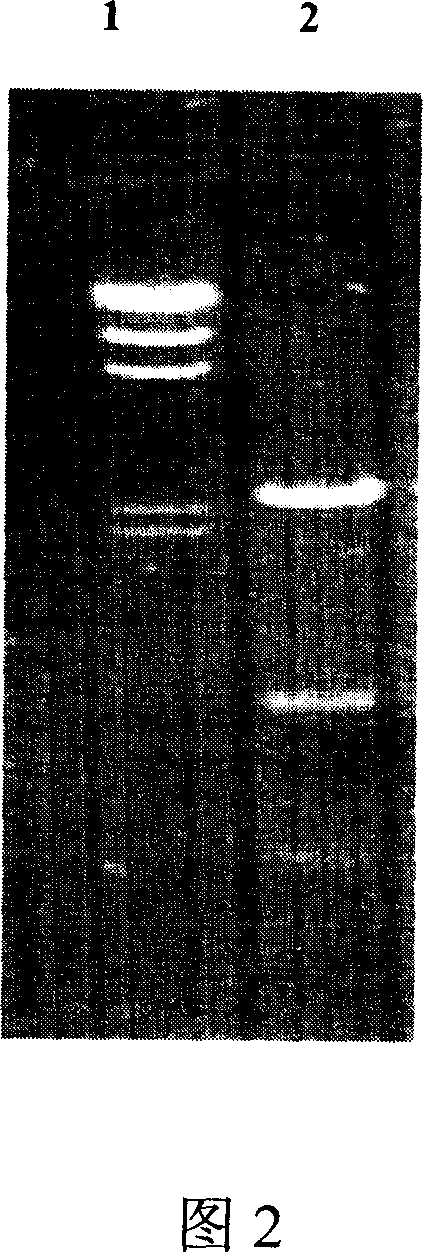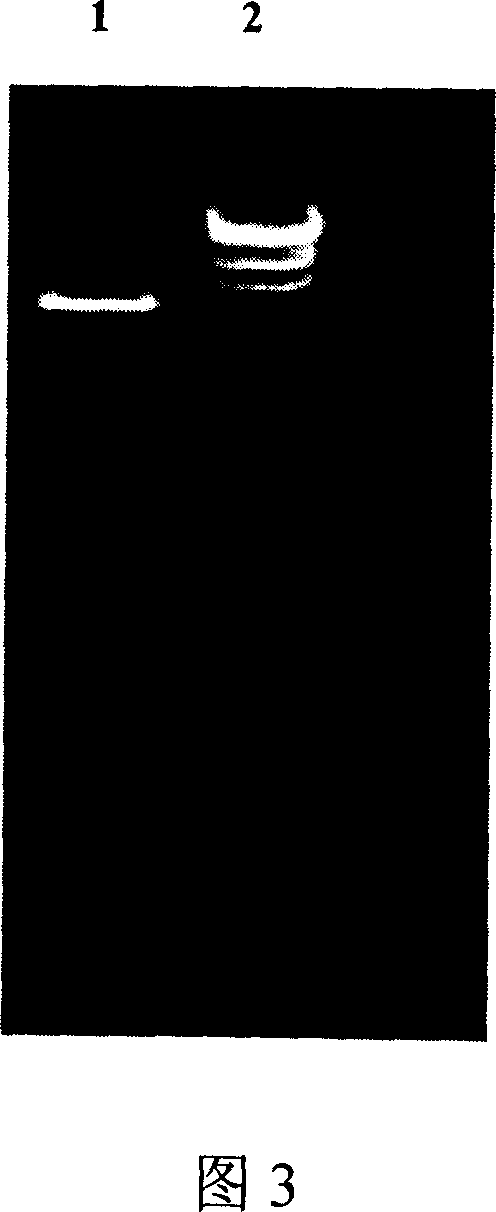Ester hydrolase with R-isomer stereoselectivity, gene and recombination enzyme thereof
A stereoselective, ester hydrolase technology, applied in the field of bioengineering, can solve problems such as high cost, complexity, and difficulty in adopting
- Summary
- Abstract
- Description
- Claims
- Application Information
AI Technical Summary
Problems solved by technology
Method used
Image
Examples
Embodiment 1
[0032] Example 1: Cloning of the BSEST gene from Bacillus
[0033] According to the DNA sequence of Bacillus sp H-257 lipase (J Biochem, 2001, 129:397) and the DNA sequence of Bacillus cereus C71 lipase (Genbank: AY896293), degenerate primers 1 and 2 were designed. A NdeI site was added to primer 1, and a HindIII site was added to primer 2.
[0034]Primer 1 sequence: GGAATTC CATATG AGCGAMCABTACHGGTGCTCGKGC
[0035] Nd
[0036] Primer 2 sequence: CCC AAGCTT TCCNGCNTGCTTBKCGNAAAATKCGAGA
[0037] Hind III
[0038] steps
[0039] 3
[0040] Use 0.7% agarose gel to separate the PCR product, reclaim the DNA fragment (as shown in Figure 1) of 750bp from the gel, be called for short the BSEST gene, connect with the pMD18-T carrier, the gained plasmid is called pBSEST-T, and the connected product transforms Competent Escherichia coli DH5a. Plasmid pBSEST-T was analyzed by HindIII and NdeI double enzyme digestion, which prove...
Embodiment 2
[0041] Embodiment 2: Construction of expression vector and transformant
[0042] After the pBSEST-T plasmid and pET22b(+) were digested with NdeI and HindIII respectively, the digested products were separated with 0.7% agarose gel, and the 750kbp and 4.8kbp DNA fragments were recovered from the gel, and connected with T4 DNA ligase , the obtained plasmid is called pBSEST-PET plasmid, and the ligation product is transformed into competent Escherichia coli E.coli BL21 (DE3). The positive clones are screened by resistance medium and identified by HindIII and NdeI double digestion analysis, which proves that they contain the correct The insert fragment (as shown in FIG. 3 ), thereby obtaining a transformant-a genetically engineered strain E.coliBL21(DE3) / pBSEST-PET CGMCC No.1648 expressing the esterase of the present invention.
[0043] The process of Embodiments 1-2 is shown in Figure 6.
Embodiment 3
[0044] Example 3: Expression of Esterhydrolase
[0045] The genetically engineered strain E.coli BL21(DE3) / pBSEST-PET CGMCC No.1648 was inoculated in 5ml of LB medium containing 50ug / ml ampicillin, and cultured overnight at 37°C with shaking. Take 50ul culture solution and connect to 5ml fresh LB medium containing 50ug / ml ampicillin, culture to OD 600 =0.6 or so, add IPTG until its concentration is 1mmol / L for induction, and continue to cultivate for 4h. The bacteria were collected by centrifugation, and the enzyme activity was detected with 1 mmol / L flurbiprofen ethyl ester as the substrate, and the enzyme activity was 20 U / g dry bacteria.
PUM
 Login to View More
Login to View More Abstract
Description
Claims
Application Information
 Login to View More
Login to View More - R&D
- Intellectual Property
- Life Sciences
- Materials
- Tech Scout
- Unparalleled Data Quality
- Higher Quality Content
- 60% Fewer Hallucinations
Browse by: Latest US Patents, China's latest patents, Technical Efficacy Thesaurus, Application Domain, Technology Topic, Popular Technical Reports.
© 2025 PatSnap. All rights reserved.Legal|Privacy policy|Modern Slavery Act Transparency Statement|Sitemap|About US| Contact US: help@patsnap.com



